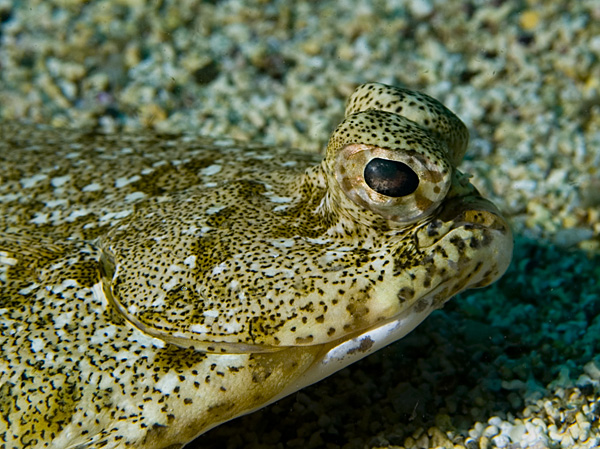Frank O
Contributor
Thanks for the reply. For the past few months when I've been seeing flatfish of this general size and shape, I've been thinking, "Sole? Flounder?"
Then I took this picture at Catalina Island in Southern California in June:

and a knowledgeable long-time dive operator said, "Oh, that's a sanddab!" (I was concentrating on the eyes in this shot, and would have to hunt around to see if I have anything of the body that would show the fins.)
One of the references I ran across while tracking down the parasite referred to it occurring on Pacific sanddabs in our area. But the coloring of the above two fish looks different to me. (Also -- am I correct in thinking that the two flatfish in my pictures are different in that one is left-sided and one is right-sided (not sure what the right term is for this)?)
I agree that the fin rays of the parasite-infected fish are more suggestive of the flounder in your reference picture.
Then I took this picture at Catalina Island in Southern California in June:

and a knowledgeable long-time dive operator said, "Oh, that's a sanddab!" (I was concentrating on the eyes in this shot, and would have to hunt around to see if I have anything of the body that would show the fins.)
One of the references I ran across while tracking down the parasite referred to it occurring on Pacific sanddabs in our area. But the coloring of the above two fish looks different to me. (Also -- am I correct in thinking that the two flatfish in my pictures are different in that one is left-sided and one is right-sided (not sure what the right term is for this)?)
I agree that the fin rays of the parasite-infected fish are more suggestive of the flounder in your reference picture.




